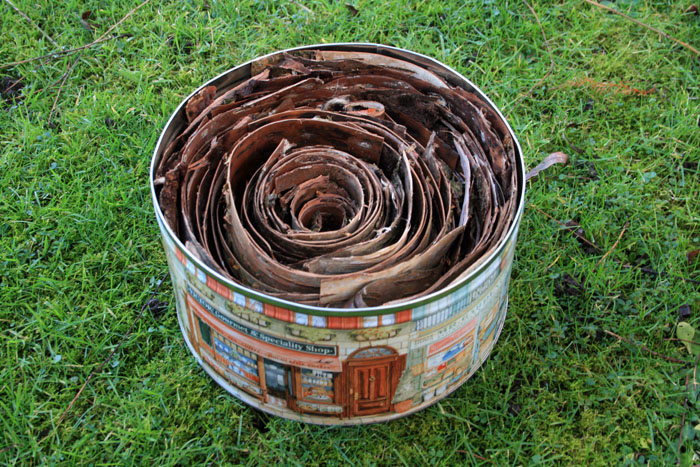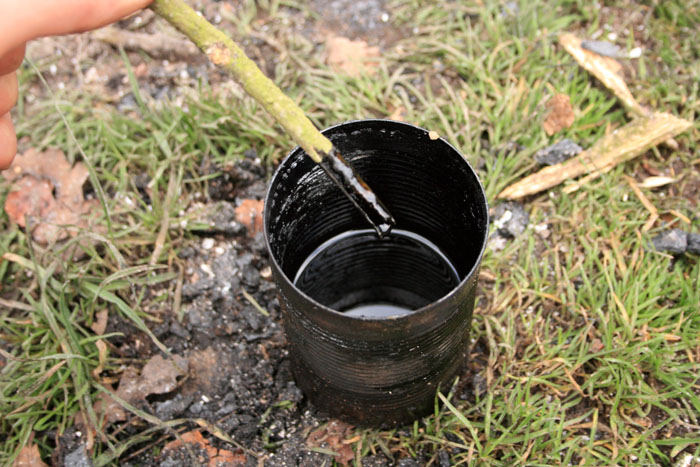If you take advantage of the benefits of pine pitch in the field, but don’t like going through the hassle of processing the material, you may want to consider birch tar or oil as an alternative. This little-known extract can provide you with fuel, act as a sealant and even repel certain kinds of insects. It is also very easy to make, and you can produce large quantities with minimal resources. Let’s take a look at a simple method for processing the material along with a few tips on how to put it to good use.
Two Cans and a Fire

All you need to process birch bark are two cans and a fire. Remove strips of the bark from the tree and line the inside of a large metal can until it is stuffed. Poke a hole, about ½ inch in diameter, in the center of the bottom of the can. Oil will ooze from the bark and settle on the bottom of the can as it is heated.
The general idea is to center a smaller can beneath the hole in the larger one in order to collect the oil. The easiest way to do this is to make a fire pit and bury the smaller can so that the top rests just above the dirt or ashes. Place the larger can on top and surround it with your wood. Cover the can before starting the fire, and let it cook down until all of the liquid has been extracted.
The liquid that you collect will resemble dirty motor oil, and it will have a very strong odor. The bark may also produce a lot of smoke as it burns as well, and this is completely normal. You can either store the oil as-is, or you can process it further until it turns into a tar-like substance. All you need to do to create tar is cook the liquid over a small fire until the desired amount of water evaporates. It will thicken and solidify as it cools, and you can form it into various shapes and sizes according to your needs.
Practical Uses

One of the most common uses for birch bark oil is as a fuel. It is a very flammable substance that can be used for lanterns or to douse fabric attached to hand torches. Other common applications include treating and sealing leather or to make various fabrics more water-resistant. You can also use it to coat tools and utensils to protect metal from corrosion, and the oil also makes for a great lubricant. The oil has also been touted as an insect repellent, but there is a lot of disagreement as to its overall effectiveness. However, it does seem to keep snails, slugs and grubs at bay.
Tars are used primarily as sealants and fire-starters. You can apply it to almost any surface or fabric in order to make them more impenetrable to moisture, and it can also be used as a mild-adhesive when making minor repairs. To use tar as a fire-starter, simply coat some of the kindling and wood with the substance and light. You can also light small pieces of tar and strategically-place them around fires that would otherwise be hard to ignite.
Try to make your own batch the next time you come across a downed birch tree. Chances are that you will discover all kinds of ways to put birch bark oil to work for you, and this is one resource that you definitely want to have in your survival bag of tricks.
